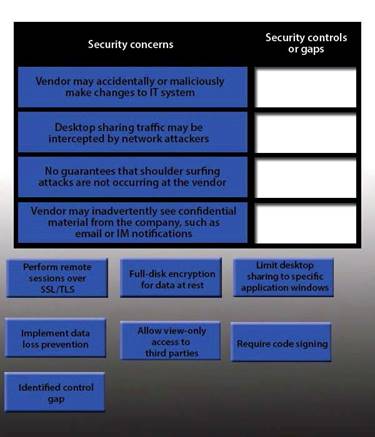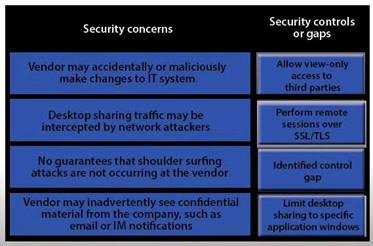- All Exams Instant Download
IT staff within a company often conduct remote desktop sharing sessions with vendors to troubleshoot vendor product-related issues. Drag and drop the following security controls to match the associated security concern. Options may be used once or not at all
DRAG DROP
IT staff within a company often conduct remote desktop sharing sessions with vendors to troubleshoot vendor product-related issues. Drag and drop the following security controls to match the associated security concern. Options may be used once or not at all.

Answer: 
Explanation:
Vendor may accidentally or maliciously make changes to the IT system -Allow view-only access. With view-only access, the third party can view the desktop but cannot interact with it. In other words, they cannot control the keyboard or mouse to make any changes.
Desktop sharing traffic may be intercepted by network attackers – Use SSL for remote sessions. SSL (Secure Sockets Layer) encrypts data in transit between computers. If an attacker intercepted the traffic, the data would be encrypted and therefore unreadable to the attacker.
No guarantees that shoulder surfing attacks are not occurring at the vendor – Identified control gap. Shoulder surfing is where someone else gains information by looking at your computer screen. This should be identified as a risk. A control gap occurs when there are either insufficient or no actions taken to avoid or mitigate a significant risk.
Vendor may inadvertently see confidential material from the company such as email and I Ms – Limit
desktop session to certain windows.
The easiest way to prevent a third party from viewing your emails and IMs is to close the email and IM application windows for the duration of the desktop sharing session.
Subscribe
Login
0 Comments
Inline Feedbacks
View all comments

